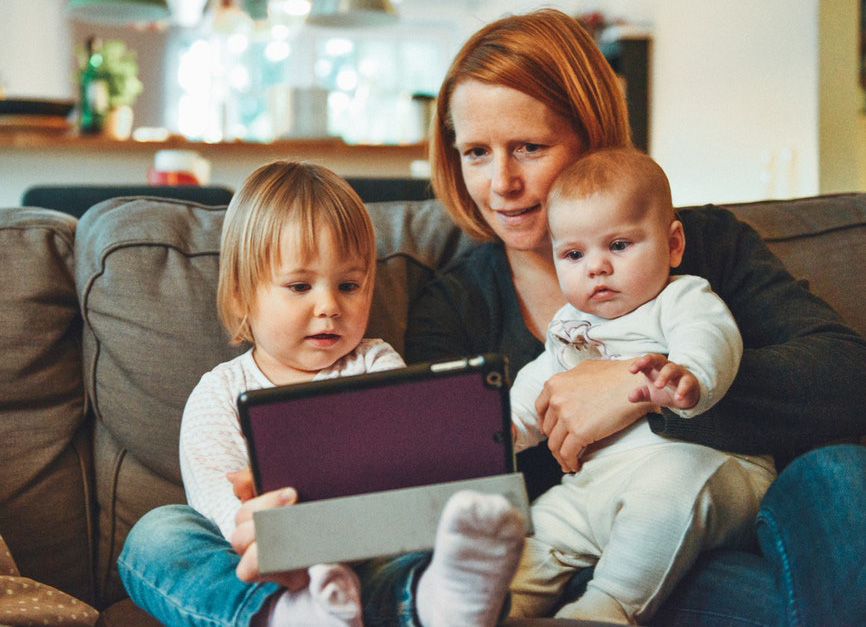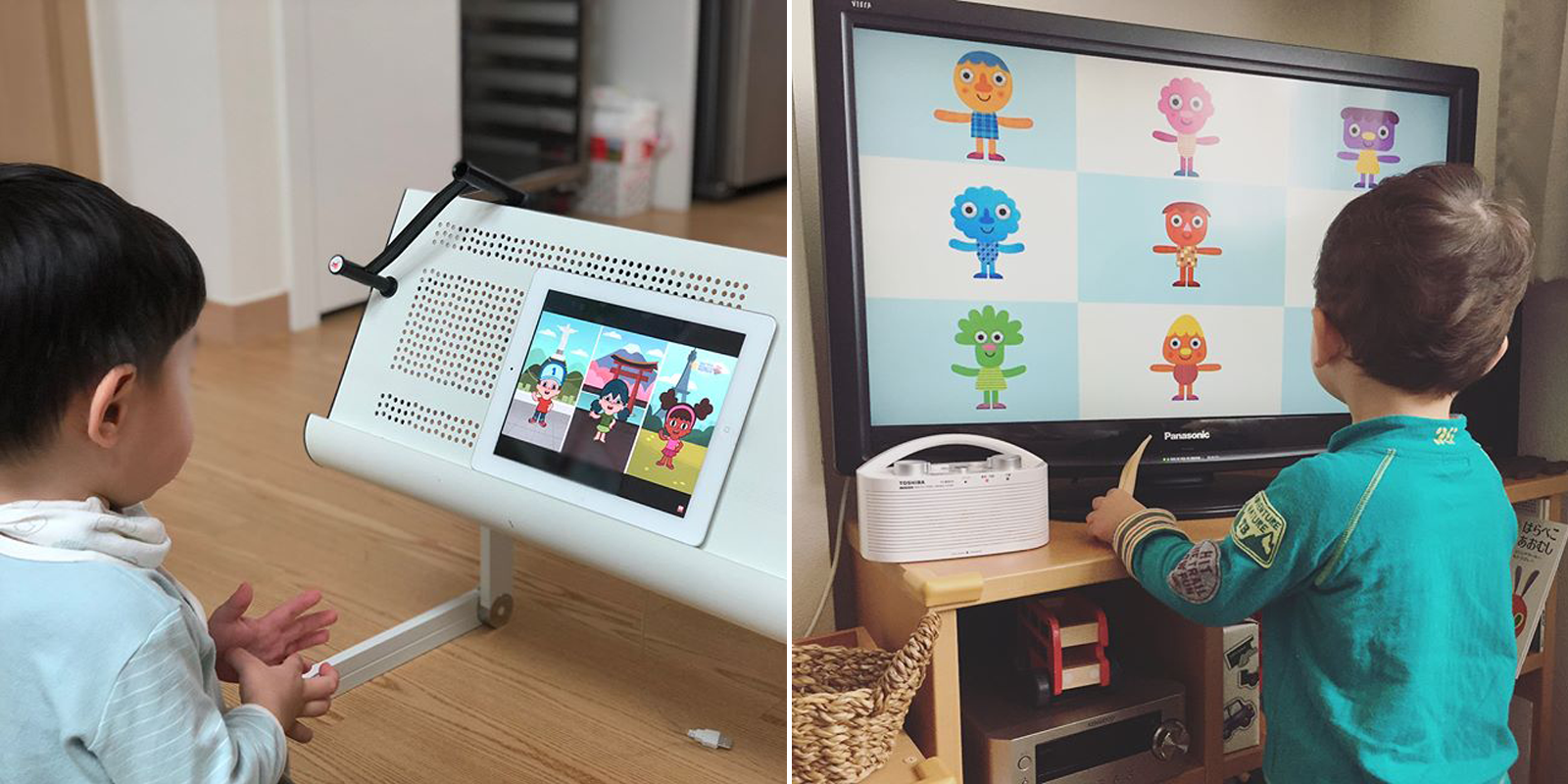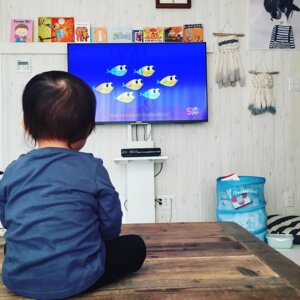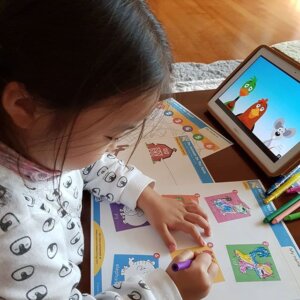
May is Better Hearing and Speech Month, and as a Speech Language Pathologist (SLP) it is my favorite time of year because it gets people talking about speech and language development, spreads awareness of hearing and communication disorders, and helps get children much needed early intervention.
Speech therapists work on many different communication skills, one of which is language development. Language development, most commonly thought of as “speech development” or “learning to talk”, is how children learn and use language (words, sign language, pictures) in order to communicate. Many kids learn language quickly, some are a little slower, and others might need direct teaching before they can learn to communicate. But no matter the pace or age you learn language, it’s a crucial skill to learn and one that is used throughout a lifetime.

Speech language pathologists frequently use songs to reinforce language they teach in therapy. Music is an excellent way to add fun and give children movement breaks that are so important to keep them focused and on task. Music is processed in a different part of the brain than language, which helps children (and adults!) with language disorders make connections they may have difficulty making otherwise. Music is also the same each time- which allows it to be predictable for those who struggle with change, and provides repetition for children who need more practice before they are able to master skills.
Super Simple Songs are often a favorite resource for SLPs to support language development. We personally love them, our own children love them, and our students love them too- and you can’t beat that! It’s easy for anyone to see why kids love these songs – they have catchy tunes, bright pictures, exaggerated facial expressions, and they are just fun to watch and listen to. And while that’s all true and absolutely a part of why SLP’s enjoy them, here are some other reasons Super Simple Songs are loved by Speech Language Pathologists:

-
- Movement: Many Super Simple Songs have movement components or actions to go along with the words. Being able to imitate actions and learning that these movements have meaning is a prerequisite skill to imitating speech sounds and learning language. These motions encourage use of gestures which is an important and often overlooked component of communication. Super Simple also has many songs that encourage children to do actions in creative play such as Wag Your Tail, and Let’s Go to the Zoo.
- Predictable and repetitive words: Did you know that Baby Shark has only 17 words? This is perfect for kids who have a limited vocabulary because if they can say “do”- or anything close to “do”- they can sing most of this whole song which will give them (and you!) something to be proud of, and help build their self-esteem and confidence in talking. Repetitive songs also give children many opportunities to learn new words and concepts as well as help children with speech sound disorders get repeated sound practice.
- Super Simple Songs teach essential language concepts: We all know Super Simple has amazing songs to teach pre-academic skills such as letters, counting, colors, shapes, etc. But more importantly they teach language concepts that are often overlooked such as actions, opposites, categories, emotions, and prepositions. A great example is Open Shut Them because it teaches opposites at a basic level for functional and commonly used concepts like open/shut, big/small, fast/slow, and more!
- Routines and activities of daily living: Raising kids is just plain hard and sometimes the everyday activities can seem daunting. Using music can help, and Super Simple has several songs to get kids motivated to make the “boring” daily tasks more fun and exciting. Brush Your Teeth, The Bath Song, Put on your Shoes, This is the Way, and Hello/Goodbye songs are all examples of how you can use music to support daily routines. These songs not only help while you are doing these at home, but also expose children to the language needed to follow directions and participate in these activities with others. Music can also be a game changer when it comes to children with difficulty with transitions. If your child struggles with with these, try the Clean Up Song when a preferred activity is over, or Bye Bye Goodbye when it’s time to go.

- You can download Super Simple Songs on iTunes, Google Play and Spotify: Many kids are great at imitating motions when they can see picture models on a screen. If you play music without a screen, it helps to work on receptive language (what you can understand) without having the help of a visual model. So listening to One Little Finger and pointing to body parts that are sang without a character to imitate is a completely different skill to practice. This is also an excellent way to work on following directions. Many kids might not always be willing to listen to parents or teachers, but when the music says it, it’s a whole different -and way more fun- activity!
(You can also find songs on: Super Simple Online, Amazon, Apple Music) - Free Resources: This is something that many people do not know about, but is an AMAZING help for teachers, parents and SLPs and it’s all FREE. If you go to the Super Simple website, there is a free resources page that has several drop-downs to help you find exactly what you are looking for. You could look up activities by song, or even by topic or concept. They have flashcards, worksheets, lyrics posters, and more! Flashcards can help children who are not yet talking participate in singing songs and learning vocabulary, worksheets can help reinforce concepts learned from songs and aid in generalizing skills, and coloring sheets, games, crafts, and dramatic play sets (think puppets!) are engaging for children with a wide range of ages and language abilities!
Always remember that children learn more from interactions with others than they can from idly watching a screen. We all need breaks, or times where we just want to unload the dishwasher without a child climbing in and “helping”, and that’s ok! Super simple songs are perfect for these times. But children’s brains can continue to make connections and grow while watching if they can build off of their previous knowledge that was made by singing, doing motions, talking about pictures, and being silly with their parents.
Don’t forget to follow us on Twitter, Instagram, Pinterest, and Facebook!
 Contributor
Contributor
Andi Putt is a mommy, pediatric Speech Language Pathologist, and chocolate lover. She specializes in language development and autism spectrum disorders, and has deep love for helping children with special needs. Andi is passionate about teaching parents how to support speech and language development at home, and does this on her blog at www.mrsspeechiep.com. Follow her on Facebook and Instagram for quick tips to improve your child’s communication skills.
Original content © 2018 Super Simple. Not to be reprinted without express written permission. Terms of Service.

